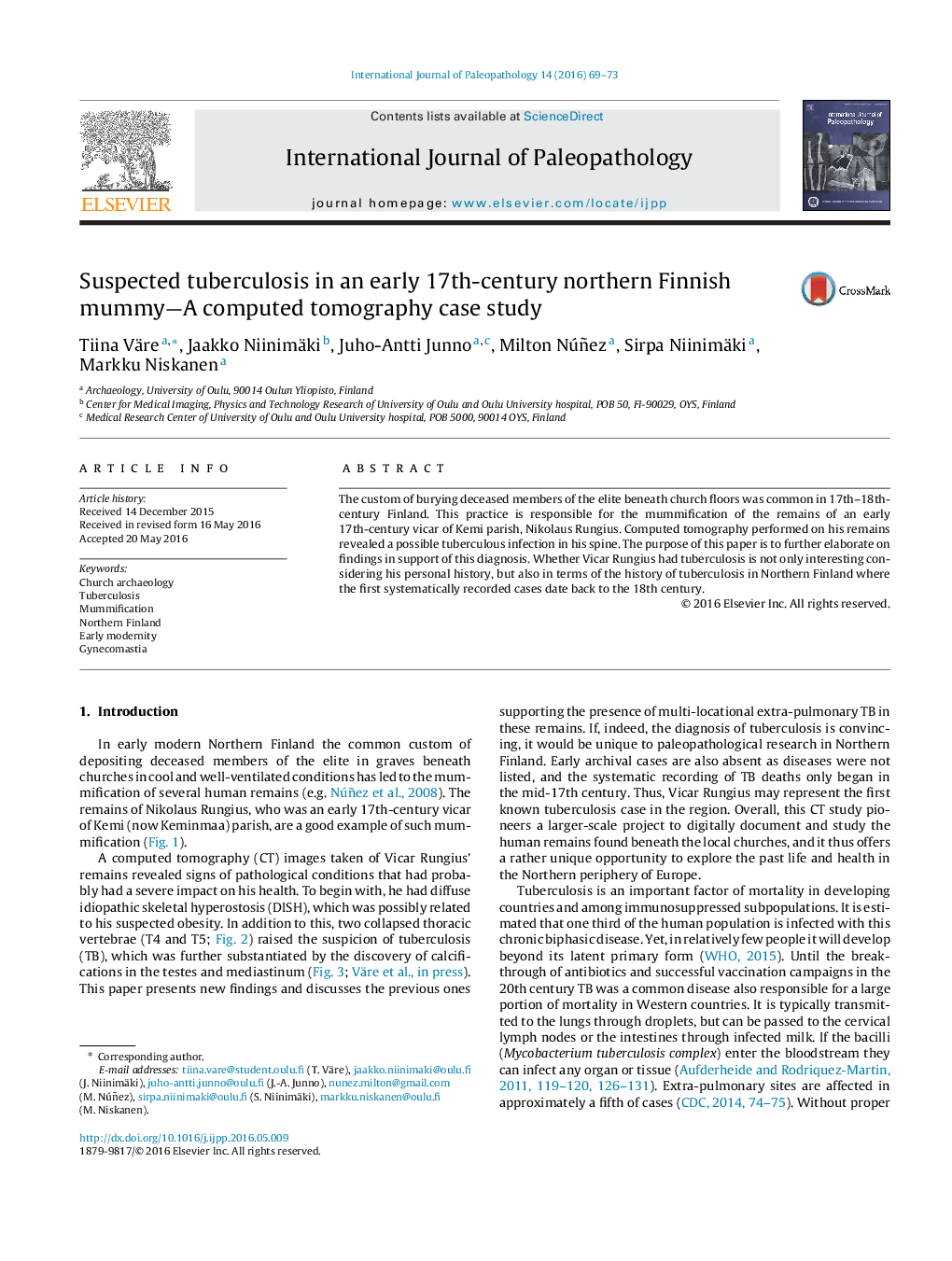| Article ID | Journal | Published Year | Pages | File Type |
|---|---|---|---|---|
| 101295 | International Journal of Paleopathology | 2016 | 5 Pages |
Abstract
The custom of burying deceased members of the elite beneath church floors was common in 17th–18th-century Finland. This practice is responsible for the mummification of the remains of an early 17th-century vicar of Kemi parish, Nikolaus Rungius. Computed tomography performed on his remains revealed a possible tuberculous infection in his spine. The purpose of this paper is to further elaborate on findings in support of this diagnosis. Whether Vicar Rungius had tuberculosis is not only interesting considering his personal history, but also in terms of the history of tuberculosis in Northern Finland where the first systematically recorded cases date back to the 18th century.
Related Topics
Life Sciences
Biochemistry, Genetics and Molecular Biology
Physiology
Authors
Tiina Väre, Jaakko Niinimäki, Juho-Antti Junno, Milton Núñez, Sirpa Niinimäki, Markku Niskanen,
